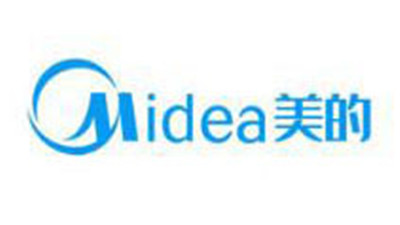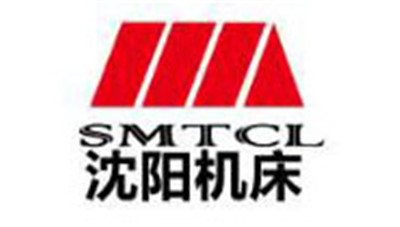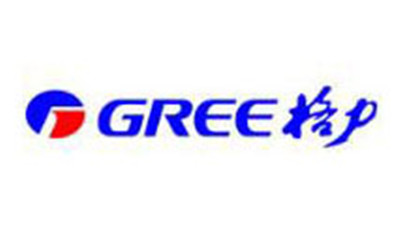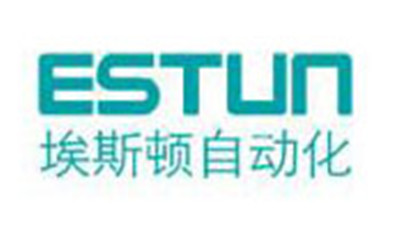Unlocking the Advantages of Axial Leaded Power Ferrite Bead Inductors for Modern Electronics
Table of Contents
- Benefits of Axial Leaded Power Ferrite Bead Inductors in Circuit Design
- Key Features of Axial Leaded Ferrite Bead Inductors to Consider
- Comparative Analysis: Axial Leaded vs. Other Inductor Types
- Application Scenarios for Axial Leaded Ferrite Bead Inductors
- Best Practices for Integrating Axial Leaded Inductors in Modern Electronics
- Exploring the Advantages and Applications of High Frequency Inductor Coils in Modern Electronics
- FAQS
- Conclusion
- Related Posts
In today’s fast-changing world of electronics, components like the Axial Leaded Power Ferrite Bead Inductor are really important. They help make devices more reliable and perform better. I recently came across a report from Research and Markets saying that the global market for inductors is expected to grow a lot, mainly because there's a bigger need for efficient power management—especially in those tiny, sleek gadgets we all love. Dezhou Xinping Electronics Co., Ltd., a high-tech enterprise from China, has been leading the way since 2001, focusing on making precision electronic transformers. By using Axial Leaded Power Ferrite Bead Inductors, we’ve found ways to boost signal clarity and cut down electromagnetic interference, which is super crucial for the fancy, high-tech systems we rely on every day.

Benefits of Axial Leaded Power Ferrite Bead Inductors in Circuit Design
You know, axial leaded power ferrite bead inductors are really becoming a big deal in today's circuit design world. They’ve got this knack for knocking down high-frequency noise, which actually helps the whole circuit run a lot smoother. The ferrite material does a pretty good job at soaking up electromagnetic interference (EMI), which is super important if you're working with sensitive stuff like telecom gear or computers — gotta keep those signals clean, right? The cool thing about the axial lead setup is that it makes these inductors pretty easy to fit into different circuit layouts. That makes them a favorite among engineers who are trying to squeeze everything into tight spaces without sacrificing performance.
And on top of that, their thermal management features are no joke. They help spread out heat more evenly, cutting down on hot spots that could potentially cause things to fail. Plus, their sturdy build and ability to handle high currents make them perfect for power supplies where you really need things to be reliable and efficient. When you add these inductors into your circuit, not only do your devices run more smoothly, but they also tend to last longer. All in all, choosing the right components like these ferrite bead inductors really helps in pushing modern electronics to perform at their best.
Key Features of Axial Leaded Ferrite Bead Inductors to Consider
When you're looking into using axial leaded ferrite bead inductors in modern electronic designs, there are a few key features you should really pay attention to. One big plus is how well they perform at high frequencies. A recent report from the Electronic Components Industry Association (ECIA) mentions that these inductors can operate at frequencies up to about 1 MHz, which makes them pretty good at filtering out high-frequency noise in power supplies. That’s super important these days since devices need cleaner power to run better and last longer.
Another thing I’d highlight is how compact these inductors are. Their small size makes them a perfect fit for applications where space is tight. The global market for tiny electronic components is expected to grow at around 6.5% annually from 2022 to 2027, according to Markets and Markets, which just goes to show how much everyone’s leaning towards smaller, more efficient parts. Plus, these inductors do really well across a wide range of temperatures, meaning they stay reliable no matter where or how harsh the environment gets. All in all, axial leaded ferrite bead inductors are a solid choice for today’s electronics—they boost performance and maintain dependability, even in tricky conditions.
Unlocking the Advantages of Axial Leaded Power Ferrite Bead Inductors for Modern Electronics
Comparative Analysis: Axial Leaded vs. Other Inductor Types
When it comes to modern electronics, axial leaded power ferrite bead inductors really stand out—and for good reason. These little guys are known for their compact size and great electromagnetic performance, which makes them super effective at reducing high-frequency noise. They’re a real game-changer in lots of applications, especially because they fit into circuit designs so easily. Unlike some traditional inductors that can be bulky or awkward, these axial leaded types save space without sacrificing quality or effectiveness.
Here at Dezhou Xinping Electronics Co., Ltd., we totally get how important precise electronic parts are in today’s tech scene. We’ve been in the game since 2001 as a high-tech company, focusing on making top-notch electronic transformers. But we’re also big on developing innovative solutions—especially when it comes to axial leaded power ferrite bead inductors. Our goal is to provide dependable components that genuinely boost the performance and efficiency of electronic devices. When you compare these inductors to other types, you’ll notice they do a much better job at noise suppression and handling heat, which is pretty crucial in our fast-moving tech world. We’re all about helping our clients stay ahead with reliable, high-quality components."
Unlocking the Advantages of Axial Leaded Power Ferrite Bead Inductors for Modern Electronics - Comparative Analysis: Axial Leaded vs. Other Inductor Types
| Inductor Type | Inductance Range (µH) | DC Resistance (Ω) | Current Rating (A) | Self-Resonant Frequency (MHz) | Applications |
|---|---|---|---|---|---|
| Axial Leaded Ferrite Bead Inductor | 1 - 1000 | 0.01 - 0.1 | 0.5 - 15 | 30 - 300 | Power supplies, RF applications, EMI filtering |
| Radial Leaded Inductor | 10 - 5000 | 0.02 - 0.5 | 1 - 20 | 20 - 200 | Switching power supplies, audio equipment |
| SMD Inductor | 1 - 1000 | 0.01 - 0.2 | 0.5 - 10 | 50 - 500 | Smartphones, tablets, compact power supplies |
| Choke Inductor | 1 - 2000 | 0.05 - 1.0 | 0.5 - 25 | 10 - 150 | Power inverters, RF circuits |
Application Scenarios for Axial Leaded Ferrite Bead Inductors
You know, axial leaded ferrite bead inductors are really catching on these days across all sorts of high-tech gadgets. They’re especially handy when space is tight—think about smartphones or wearables—because their design makes them super easy to fit onto printed circuit boards. Plus, they’re great at filtering out high-frequency noise, which helps keep signals clean and stuff running smoothly.
But it’s not just consumer tech that benefits. These inductors are also a big deal in industrial settings and in cars. In factories and machinery, they block out electromagnetic interference (EMI), which is essential for making sure sensitive sensors and control systems stay reliable. And in vehicles, they play a key role in power management modules, helping everything run smoothly even as automotive electronics become more complex.
All in all, their versatility and ability to tame noise across different frequencies really make axial leaded ferrite bead inductors a smart pick for engineers who want to boost the reliability and efficiency of modern electronics. It’s pretty fascinating how such small components can have such a big impact, don’t you think?

Best Practices for Integrating Axial Leaded Inductors in Modern Electronics
Incorporating axial leaded power ferrite bead inductors into today’s electronics isn’t just a technical choice—it actually makes a real difference. These little guys are pretty much essential when it comes to filtering out high-frequency noise, which helps keep signals crystal clear in more complex circuits. When you use them in power supplies, they can really boost overall efficiency by keeping voltage stable and cutting down on electromagnetic interference—that kind of noise that can really mess things up.
If you’re thinking about adding these inductors to your designs, a bit of practical advice can go a long way. For example, placing them close to where power is distributed is key—this helps minimize extra inductance and resistance. Plus, it’s important to think about thermal management. Giving them enough space and using good cooling solutions can prevent overheating, especially in tight, compact setups. As tech keeps advancing, understanding how to properly use axial leaded ferrite bead inductors is becoming more and more important for manufacturers who want to deliver high-quality, reliable products that can keep up with modern demands.

Exploring the Advantages and Applications of High Frequency Inductor Coils in Modern Electronics
High frequency inductor coils, often referred to as spiral coils, play a pivotal role in the realm of modern electronics. These coils are meticulously designed with insulated wire wound around an insulating tube, ensuring that each wire remains insulated from the others. This intricate design allows for various configurations, including hollow tubes or those containing an iron core or magnetic powder core. Such flexibility in design translates into a multitude of applications across diverse industries, from power communications to the fast-evolving sector of new energy vehicles.
The benefits of high frequency inductor coils are numerous, particularly when utilized in fixed inductors, choke coils, and oscillating coils. Their ability to effectively manage and filter electrical signals makes them indispensable in electric vehicle controllers, drives, medical equipment, and LED lighting systems. Each application reaffirms the coil's essential functionality, whether it's stabilizing power supplies or enhancing signal integrity. Additionally, the ability to customize these components according to specific customer requirements and the availability of OEM services further bolsters their appeal in dynamic electronic markets.
FAQS
: Axial leaded power ferrite bead inductors suppress high-frequency noise, enhance overall circuit performance, absorb electromagnetic interference, and allow for easy integration into various layouts.
Axial leaded inductors offer a compact design that minimizes high-frequency noise and integrates seamlessly into circuit designs, providing significant space-saving benefits without compromising quality.
Proper thermal management helps distribute heat evenly, preventing hotspots that could lead to component failure, thus enhancing the reliability of electronic devices in demanding environments.
They are particularly effective in telecommunications, computing, and power supply applications where efficiency and durability are critical.
Best practices include proper placement near power distribution points, adequate spacing, and using thermal solutions to prevent overheating, especially in compact designs.
Their robust design and ability to handle high currents boost efficiency in power supply applications, resulting in a smoother operation and extended lifespan for electronic devices.
Yes, they filter high-frequency noise, which is essential for maintaining signal integrity in complex electronic circuits.
The ferrite material of the inductors effectively absorbs EMI, which is crucial for minimizing disruption in sensitive electronic applications.
As a high-tech enterprise, they specialize in manufacturing high-quality electronic transformers and focus on advanced solutions like axial leaded power ferrite bead inductors to enhance electronics performance.
Understanding how to effectively utilize these inductors is vital for delivering high-quality, reliable products that meet modern technology demands.
Conclusion
Hey, I came across this blog titled "Unlocking the Advantages of Axial Leaded Power Ferrite Bead Inductors for Modern Electronics," and honestly, it’s pretty interesting. It dives into all the ways these inductors can improve circuit design, pointing out their main features and where they’re used. Basically, axial leaded power ferrite bead inductors bring some serious perks, like better noise filtering and a smaller, more streamlined design. That’s why they’ve become pretty much essential in today's electronic gadgets. The article also compares them with more traditional inductors, making it clear they tend to be more efficient and reliable for modern circuits.
Plus, it goes into detail about the kinds of situations where these inductors really shine — especially in tough applications that need precision and minimal EMI. They even talk about how best to incorporate them into your designs, so engineers don’t have a hard time getting them just right. Oh, and by the way, Dezhou Xinping Electronics Co., Ltd., being a top manufacturer in this space, is more than capable of providing high-quality parts that boost how well today’s electronics perform.
All in all, it’s a pretty solid read if you’re into the nuts and bolts of electronics design or just curious about what makes these inductors special.
Related Posts
-

Understanding the Challenges Faced with Converter Transformers in Industrial Applications
-

30 Reasons Why the Best 30 Kva Transformer is Essential for Your Global Procurement Strategy
-

How to Choose the Right Constant Voltage Transformer for Your Industrial Application
-

Essential Checklist for Selecting Large Rated Current Common Mode Inductors in Your Projects
-

Understanding the Versatility of 10kva Transformer Applications in Various Industries
-

Ultimate Guide to Mastering Lead Transformers for Business Growth
Blog Tags:


















